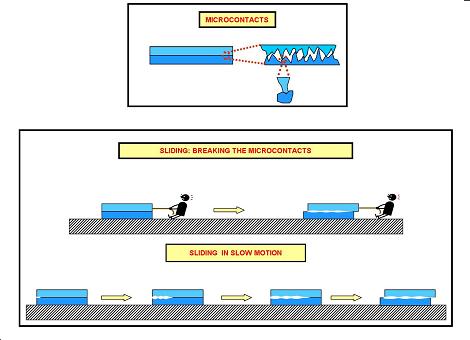The research was published in the prestigious journal Nature
A new study by researchers at the Hebrew University of Jerusalem could improve the prediction of earthquakes. The study dealing with "detachment fronts" that are involved in the friction process, sheds light on an old scientific puzzle.
Although the subject of friction has been studied for centuries by esteemed researchers such as Leonardo da Vinci and physicists Charles Augustine de Coulomb and Heinrich Rudolf Hertz, the subject remains as intriguing and contemporary as it was 500 years ago. Researchers have not yet been able to decipher the basic mechanisms of friction, that is, what exactly happens when two surfaces begin to rub against each other as a result of applying pressure.
The research of the head of the Rakach Institute for Physics at the Hebrew University Prof. J. Feinberg, Dr. Gil Cohen and the student Shmuel N. Rubinstein was described in an article that appeared in the journal Nature under the title "Detachment waves in the transition to dynamic friction".
Using a new optical technique and recent developments in high-speed photography technology, researchers from the Hebrew University observed for the first time how three different types of energy release waves control the friction process. These waves, operating within an area a few microns thick (micron = millionth of a meter) between surfaces that rub against each other, move at very different speeds. Each type of wave has a characteristic range of speeds: the slow wave that is almost imperceptible - its speed reaches up to 10% of the speed of sound; The medium waves that characterize earthquakes - their speed reaches up to 100% of the speed of sound; Whereas the speed of the ultrasonic waves reaches twice the speed of sound.
To understand how an earthquake occurs, imagine two plates placed on top of each other under pressure. Now suppose that you pass between the two plates a thin knife that cuts off the points of contact between them. If you move the knife first slowly and then faster until the stop point, every area the knife goes through will begin to rub in spots. According to the laws of physics, the friction begins after the "detachment". The detachment action is the separation of tiny contact points between two surfaces, during which point friction occurs between them. First the slow waves work and become faster. This is the stage when an earthquake is felt. The researchers showed that the process is mainly controlled by the slow wave phase which until recently could not be measured.
"An earthquake is felt as a sudden and rapid movement or sliding of tectonic plates in a frictional process," says Prof. Feinberg. "The medium and supersonic waves are the ones we feel, but based on the findings of this study, it seems that in fact these are the slow, imperceptible waves that operate in the earth's crust in the initial phase of the separation, to which we must direct our attention, and which are as The visible signs are the precursors to what we call an 'earthquake,'" adds Prof. Feinberg.
As of today, there is no ability to predict earthquakes at all. If the discovery of the Hebrew University researchers is applied in underground measurements of the earth, it will be possible to prevent to some extent damage related to
In earthquakes, through early warnings about an expected "disconnection" of the Earth's plates. The findings have an impact on the measurement and prediction of earthquakes, since receiving a warning ahead of time will make it possible to significantly minimize noise damage and especially collateral damage.
"More than 5% of the losses resulting from wear and tear and energy loss in industry are caused by friction and create losses of hundreds of billions of dollars a year all over the world," says Prof. Feinberg. "The understanding gained about the basic rules of the friction process so important has implications for scientific and industrial applications in the future. Significant financial savings are also expected."

